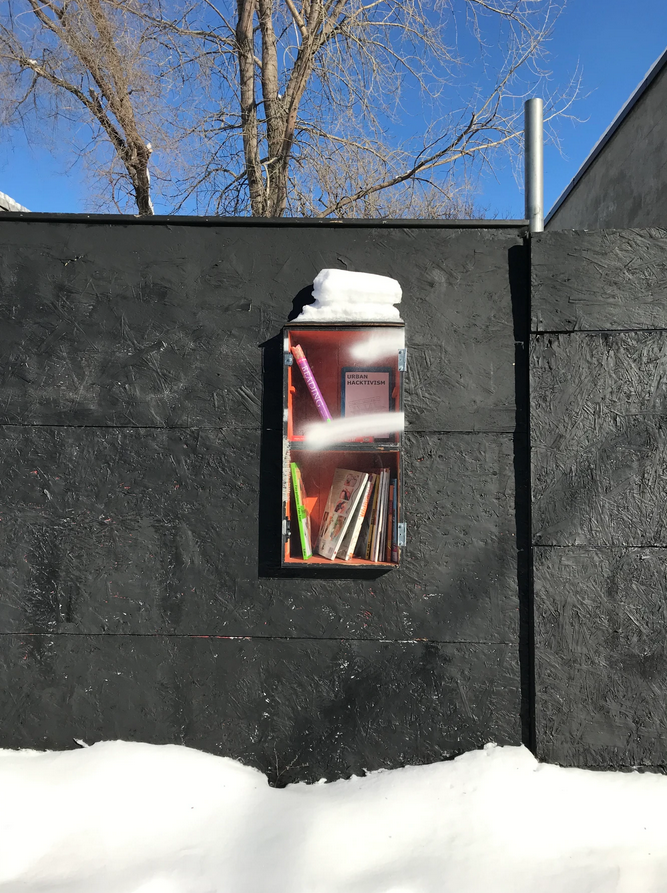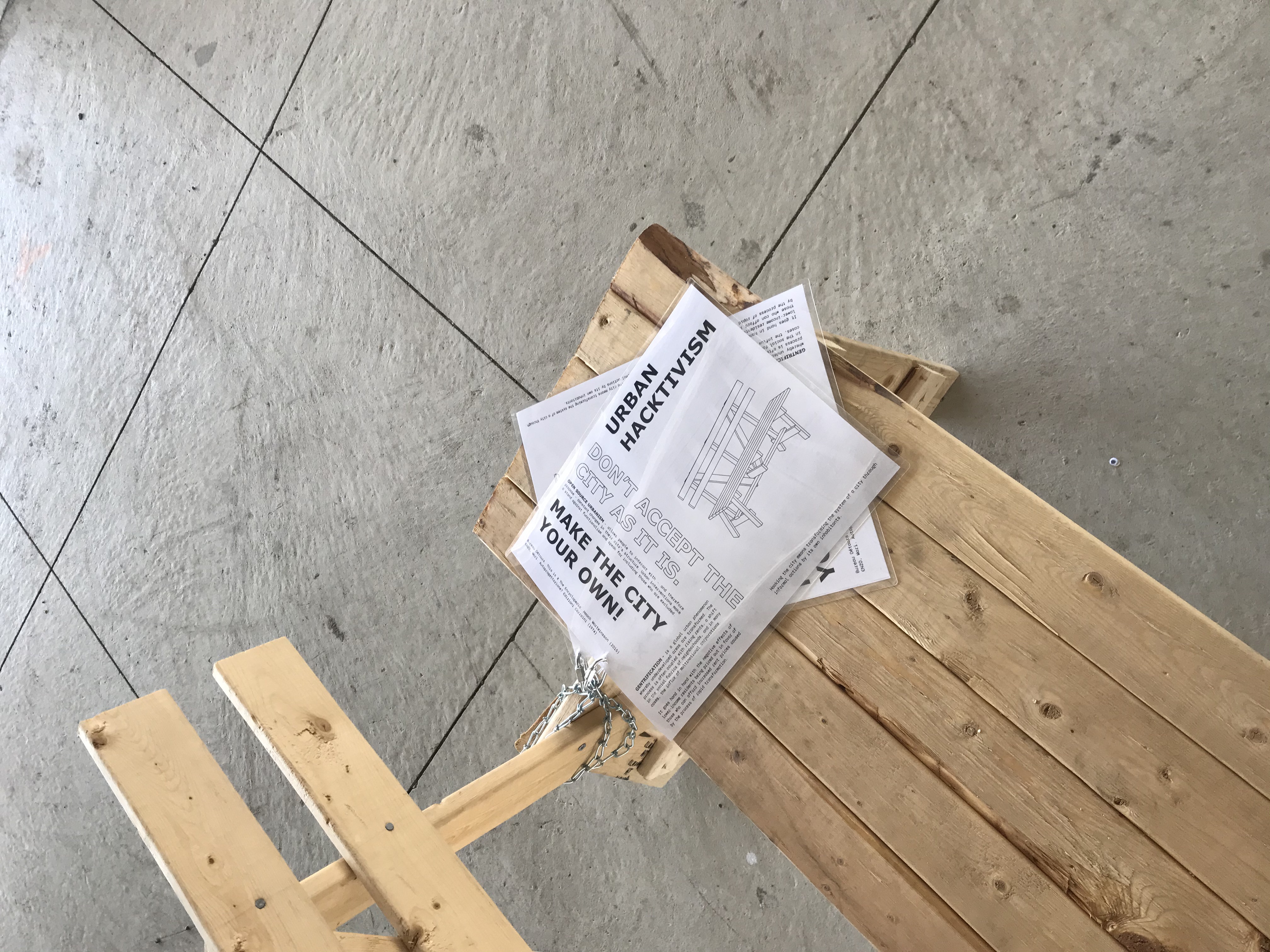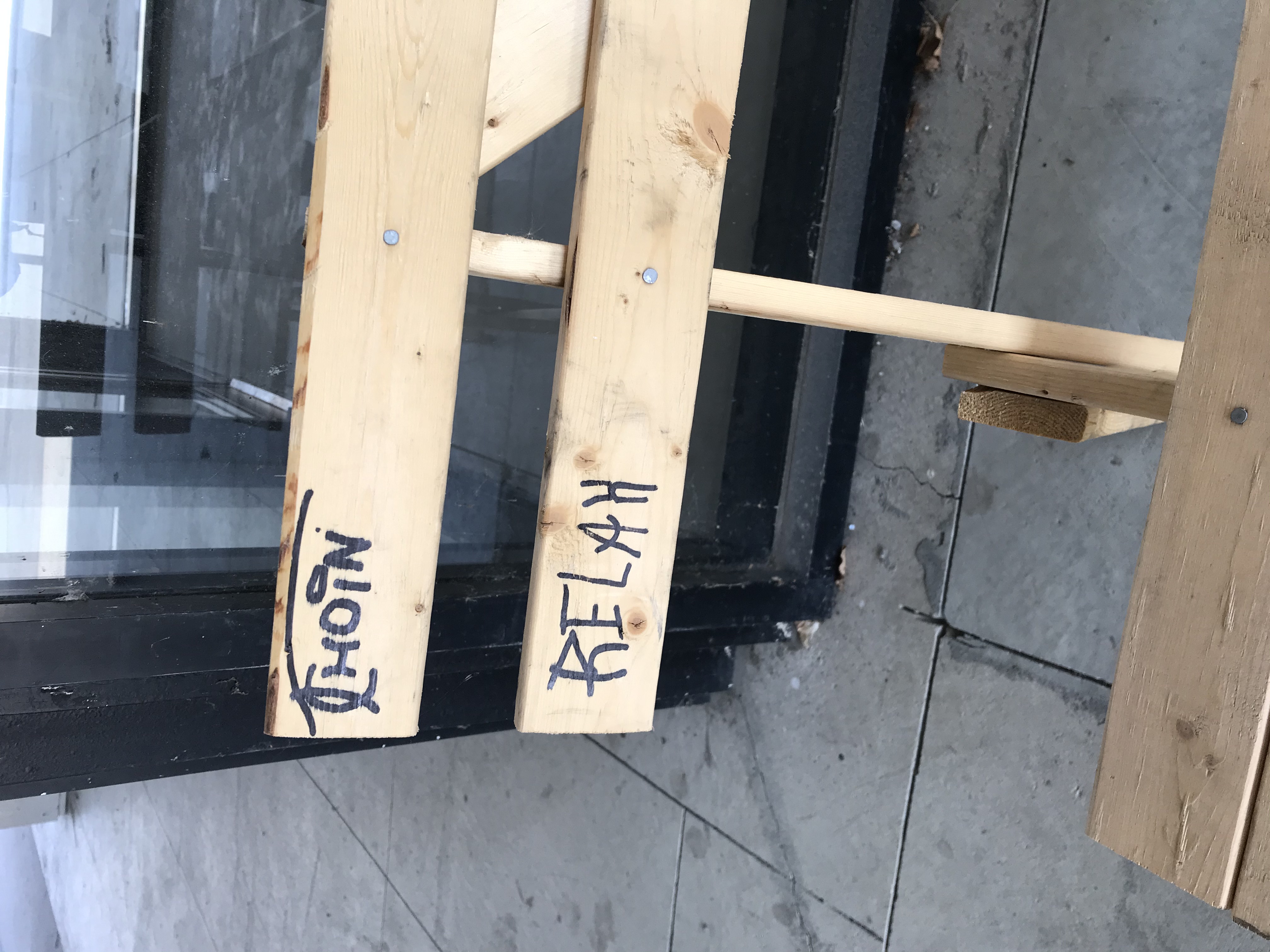[Urban Hacktivism]
[FR] - Fabriqué à partir des plans de l'architecte et designer italien Enzo Mari, publiés en 1974 dans la première version de son manuel Autoprogettazione, j’ai construit un banc en bois que j’ai déplacé dans le quartier où je vivais (Marconi-Alexandra). Ce quartier, historiquement occupé par des manufactures et des industries, subit actuellement une transformation accélérée avec l'arrivée d'entreprises technologiques axées sur l'intelligence artificielle. Le banc invite les citoyens à venir s’asseoir afin d’observer le processus de gentrification. Il devient ainsi un outil de réflexion et de discussion autour des phénomènes urbains qui provoquent le changement du tissu social d'un quartier.
Le projet se décline aussi sous la forme d’un dépliant que j'ai distribué gratuitement dans les micro-bibliothèques du quartier. Reprenant le vocabulaire graphique des manuels IKEA, le pamphlet partage de l’information sur l'architecture inclusive et la fabrication DIY.
Urban Hacktivism a été présenté dans le cadre de l'exposition Past&Future, organisée par AUS, l'association des étudiants de premier cycle en sculpture de Concordia.
-
[EN] - Based on the drawings by the Italian architect and designer Enzo Mari, published in 1974 in the first version of his manual Autoprogettazione, I constructed a wooden bench that I displayed in the neighborhood where I lived (Marconi-Alexandra). This neighborhood, historically dominated by industrial uses, is currently undergoing accelerated transformation with the arrival of technological firms focused on artificial intelligence.
The project extends in the form of a flier that I distributed in the neighborhood's micro-libraries. By hijacking IKEA’s graphic vocabulary, the flier shares information on inclusive architecture and DIY fabrication.
Urban Hacktivism was presented as part of Past&Future, an exhibition organized by AUS, Concordian association of undergraduates in sculpture.
![]()
![]()
![]()
![]()
![]()
![]()
![]()
[FR] - Fabriqué à partir des plans de l'architecte et designer italien Enzo Mari, publiés en 1974 dans la première version de son manuel Autoprogettazione, j’ai construit un banc en bois que j’ai déplacé dans le quartier où je vivais (Marconi-Alexandra). Ce quartier, historiquement occupé par des manufactures et des industries, subit actuellement une transformation accélérée avec l'arrivée d'entreprises technologiques axées sur l'intelligence artificielle. Le banc invite les citoyens à venir s’asseoir afin d’observer le processus de gentrification. Il devient ainsi un outil de réflexion et de discussion autour des phénomènes urbains qui provoquent le changement du tissu social d'un quartier.
Le projet se décline aussi sous la forme d’un dépliant que j'ai distribué gratuitement dans les micro-bibliothèques du quartier. Reprenant le vocabulaire graphique des manuels IKEA, le pamphlet partage de l’information sur l'architecture inclusive et la fabrication DIY.
Urban Hacktivism a été présenté dans le cadre de l'exposition Past&Future, organisée par AUS, l'association des étudiants de premier cycle en sculpture de Concordia.
-
[EN] - Based on the drawings by the Italian architect and designer Enzo Mari, published in 1974 in the first version of his manual Autoprogettazione, I constructed a wooden bench that I displayed in the neighborhood where I lived (Marconi-Alexandra). This neighborhood, historically dominated by industrial uses, is currently undergoing accelerated transformation with the arrival of technological firms focused on artificial intelligence.
The project extends in the form of a flier that I distributed in the neighborhood's micro-libraries. By hijacking IKEA’s graphic vocabulary, the flier shares information on inclusive architecture and DIY fabrication.
Urban Hacktivism was presented as part of Past&Future, an exhibition organized by AUS, Concordian association of undergraduates in sculpture.






